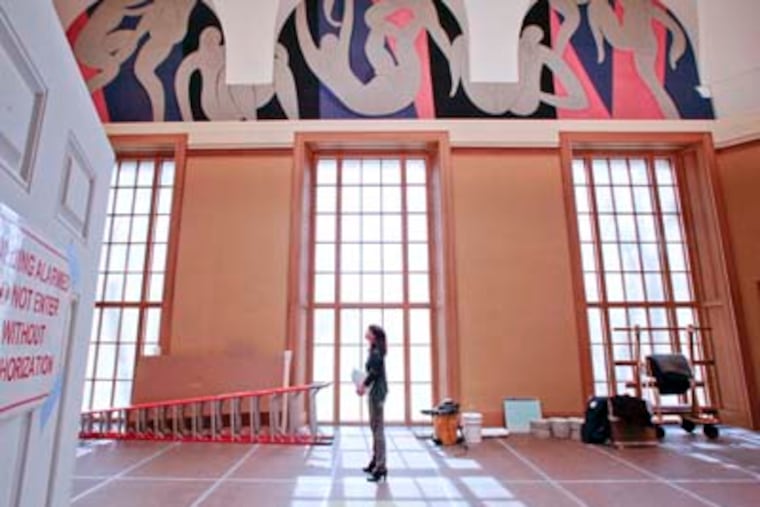Tech Life: Here comes ‘augmented reality’
You may not recognize the term augmented reality, but you’ve probably already benefited from the concept: enhancing the real world with digital information. That bright-yellow line on the football field showing how far to a first down? At times you may wish your team’s players could see it. Sadly, it’s visible only on a TV monitor.

You may not recognize the term augmented reality, but you've probably already benefited from the concept: enhancing the real world with digital information.
That bright-yellow line on the football field showing how far to a first down? At times you may wish your team's players could see it. Sadly, it's visible only on a TV monitor.
With the right equipment, you may someday be able to see digital overlays everywhere you look. A name for that face you can't quite recognize. The exact species of that flower or tree you run across in the woods. Street names and addresses floating over buildings. Some such applications are almost ready for prime time. Others are still stuck in the realm of fantasy fiction.
But come this Sunday, readers of The Inquirer who own smartphones or tablets will be able to get a taste of a different kind of augmented reality — one that may make some feel as if they're reading a newspaper straight out of the Harry Potter novels.
In the wizarding world's fictive Daily Prophet, people in pictures don't just stand still. They can move, talk, or scream. Starting Sunday, some photos and ads in this newspaper will similarly be able to come alive — at least when viewed through a special app on iPhones, iPads, or Android smartphones or tablets.
Put more prosaically, the app will enable you to point your phone or tablet at some photos or ads in the newspaper and see videos or other kinds of hidden content. The Inquirer's version of the app, InquirerAR, is already available for free at Apple's App Store and Google Play.
The paper is starting slowly, with five photos and about eight ads scheduled for a special section Sunday about the relocation of the Barnes Foundation from Lower Merion to a prime spot on the Parkway. The photos and ads will be identifiable through a logo: a small version of the Inquirer's old-English-style "I."
Point your phone or tablet at an exterior shot of the new building, and you'll see an interview with its architects. A picture of Albert C. Barnes will activate a video about the eccentric art scholar and collector who created one of the world's premier art institutions. A photo of Henri Matisse's The Dance will summon a video about how the Barnes Foundation mounted the famed mural in its new location. (You can download the InquirerAR app today and use it on the photo accompanying this column to see the same video.)
The technology underlying InquirerAR is a big deal that you'll undoubtedly be hearing more about. It was developed by a British software company, Autonomy, that HP bought last year for $11 billion.
Largely focused on business applications, Autonomy says its software "is able to make sense of and process unstructured, 'human information,'?" which it says "makes up the vast majority of content in the world today" — statements that reflect its large ambitions.
InquirerAR is based on Aurasma, a consumer-oriented version of Autonomy's software that David Stone, Aurasma's director of client services, calls "the fastest-growing augmented-reality platform on the market."
Newspapers and magazines are just a small slice of Aurasma's target market, according to Stone and marketing director Lauren Offers.
Offers says Aurasma has made 3,500 partnership deals since its launch in June 2011. Three overseas papers, including one in the Netherlands and another in Japan, are using Aurasma in ways like The Inquirer, and more U.S. papers are expected to announce similar plans next month. Aurasmatized content and ads — the company calls the digital content they generate "auras" — have appeared in magazines such as GQ and Rolling Stone.
Consumer products are a prime focus. Point a smartphone loaded with Aurasma at the front of a 2012 Buick LaCrosse, and a "virtual e-assistant" pops up to explain the features.
Aurasma Lite, a general-purpose version of the same app, also offers tools that allow users to generate their own auras. Offers, for instance, has enhanced photos from her wedding album to display wedding videos on Aurasma. "A lot of people do it for Christmas cards," she says. "They'll have their photos come to life, and the kids can say hello to the camera."
Stone says the variety of auras helps distinguish Aurasma from Google Goggles, perhaps today's best-known example of augmented-reality software. Goggles enables users to point a smartphone, say, at a landmark or famous artwork and view data about it from the Internet.
Goggles "will basically take you back to a search result," Stone says. "We're actually taking you into an experience."
Aurasma's pattern-recognition software, which Stone says focuses on lines and contrasts, is also a big step beyond QR Codes, the bar code-like inkblots that also can be used to summon videos or link to Web pages. That's what makes the product qualify as augmented reality: the ability to recognize real things as complex as photographs or three-dimensional objects and link them to digital information.
Aurasma hopes to eventually profit from its partnerships through ad click-throughs. But for now, it's offering the software for free to users and corporate partners, and imagining an augmented-reality future.
Stone likes to compare the technology to "watching TV in the 1940s" — a rudimentary technology back then that still has vast potential.
"Eventually, you'll be able to walk up to literally anything, and see it come alive," he says. "It will completely disrupt the way you interact digitally with your world."
Contact Jeff Gelles at 215-854-2776 or jgelles@phillynews.com